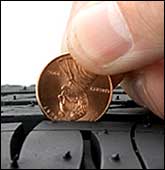 |
| 2014 Chevy Spark EV |
“When you engineer a technology-filled, all-electric mini car that goes from zero-to-60 mph in less than eight seconds, customers won’t miss the gas,” said Mark Reuss, president, General Motors North America. “The Volt and now the Spark EV show that Chevrolet not only knows EVs better than anyone else, we also know how to help customers get the most out of their EV experience.”
 Inside the Spark EV, critical vehicle functions are clearly and intuitively displayed on one of the vehicle’s two reconfigurable, high-resolution, seven-inch color LCD screens, including a confidence gauge that shows the expected driving range based on driving habits and other conditions.
Inside the Spark EV, critical vehicle functions are clearly and intuitively displayed on one of the vehicle’s two reconfigurable, high-resolution, seven-inch color LCD screens, including a confidence gauge that shows the expected driving range based on driving habits and other conditions.The soul of Spark EV
Spark EV is powered by an advanced electric motor and battery system. It consists of a GM-designed, coaxial drive unit and electric motor that together deliver 130 hp (more than 100 kW) and 400 lb.-ft. (542 Nm) of torque for instant acceleration; and a more than 20-kWh lithium ion battery is expected to provide among the best EV range performance in its segment.
The drive unit and motor will be assembled of U.S. and globally sourced parts at GM’s White Marsh, Md., manufacturing facility, and the first time a U.S. automaker has built both a complete electric motor and drive unit for a modern electric vehicle in the United States.
Spark EV’s long-life battery is designed to be safe, durable and reliable, and is warranted for eight years or 100,000 miles. It consists of a 560-pound (254 kg) square lithium-ion battery pack with a volume of 133 liters, comprising 336 prismatic cells.
“The Spark EV battery has undergone more than 200,000 hours of testing in our global battery systems labs,” said Pamela Fletcher, Chevrolet executive chief engineer of electrified vehicles. “It is extremely durable and has undergone the same abuse tolerance testing as the Volt battery.”
Leading the charge
Spark EV is the first all-electric vehicle in North America to offer optional SAE Combo DC Fast Charge capability, which can charge the battery to 80 percent of capacity in about 20 minutes. A common on-board charging receptacle accommodates all three charging platforms – DC Fast Charge, AC 240V and AC 120V.
Using a dedicated 240V outlet, Spark EV recharges in less than seven hours. Owners can coordinate charging according to departure time or during off-peak electricity rates. They also can manage and monitor the vehicle remotely via computer at OnStar.com, or with a special Chevrolet Mobile App powered by OnStar Remote Link. The Spark EV comes with three years of standard OnStar service.
Energy-saving exterior; tech-filled interior
In developing the Spark EV, Chevrolet set out to help customers conserve as much total energy as possible to maximize battery range. One important way to achieve that is by improving the vehicle’s aerodynamics. By evaluating every detail of the gasoline-powered Spark, designers and aerodynamic engineers added the equivalent of about 2.5 miles of real-world range.
Spark EV colors include Electric Blue, Black Granite, Summit White, Silver Ice and Titanium. Inside, designers sought to create a comfortable and spacious cockpit with noise-reduction features and a combination of bright accents in Electric Blue and chrome.
For more information on the 2014 Chevrolet Spark EV visit rivertonchevy.com or contact our Internet Sales Department by calling 801-938-7611







